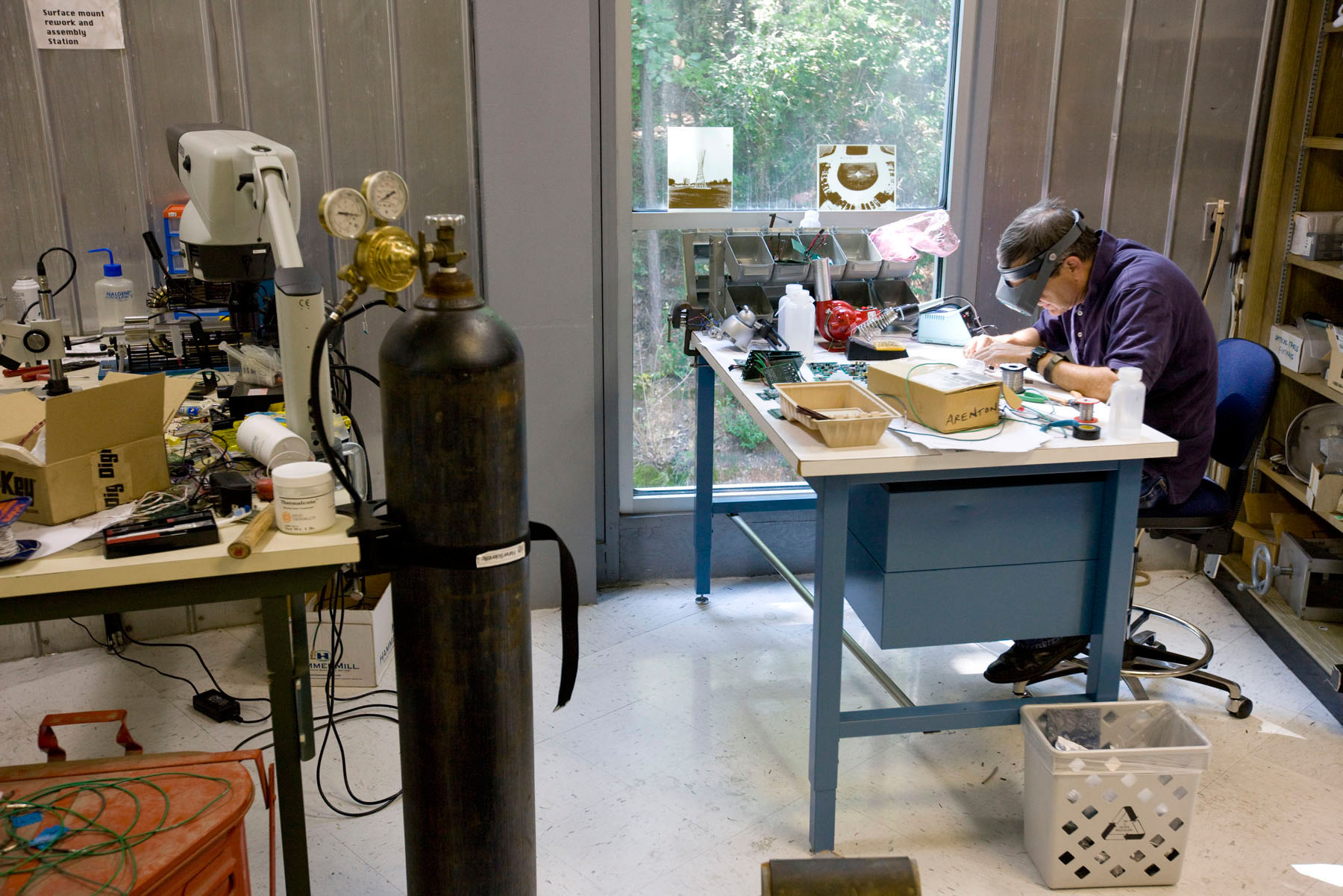September 10, 2008 — An international team of scientists today circulated the first beam of protons at nearly the speed of light around the 17-mile Large Hadron Collider on the Franco-Swiss border near Geneva. The $3.2 billion LHC — under construction for 15 years — is now the world's most powerful particle accelerator.
"Soon we may shed light on dark matter and many other mysteries of the universe, such as the Higgs particle, which we believe gives mass to every other particle in nature," said Brad Cox, professor of physics and a principal investigator with the University of Virginia's High Energy Physics Group. He has been involved with the planning and instrument design for the LHC since its inception in 1993.
Experiments at the LHC likely will bring better understanding of the most basic structure of matter, how the universe formed and evolved, and possibly how it will change. Scientists are searching for evidence of the existence of the Higgs particle, which is theorized to be the essence of all matter, the ultimate basis of everything. Physicists have been trying to find it for more than three decades.
Following a series of tests during the next few weeks – including today's exercise – scientists will begin decades-long experiments, sending opposing beams of protons around the accelerator, causing extreme high-energy collisions that will shatter the protons and produce new particles.
The basic structure of matter evolved from the first seconds after the Big Bang, the explosion of energy that is believed to have created the universe. A better understanding of the basic makings of everything could provide insight into how the universe took shape.
With the coming LHC experiments, scientists will, in effect, replicate the conditions of the infant universe, the time before particles formed into atoms and molecules, and before elements coalesced to make the stars and planets.
"We will see great theories of physics affirmed, and others refuted," Cox said.
Using a huge international computer grid, U.Va. physicists and their colleagues at dozens of institutions worldwide will gain access to massive amounts of data from what will be the highest-energy interactions ever produced by humans.
Cox, along with U.Va. physicists Sergio Conetti, Robert Hirosky, Richard Imlay, Alexander Ledovskoy, Michael Arenton and Christopher Neu, have helped develop and test components for the $800 million electromagnetic particle detectors on the LHC. Colleagues in computer science, electrical engineering, the Division of Information Technology and Communications and the radiology department also have contributed time and expertise.
The researchers will look for physical evidence of supersymmetric particles (possibly the mysterious "dark matter" that may make up 80 percent of the universe), extra dimensions beyond the four of space-time, and micro-black holes.
Cox likens the LHC to the first use of microscopes — with the right tools, things that are there but not visible may suddenly be revealed.
"The LHC will help us unravel the next layer of the onion of nature by moving us to the next frontier of our understanding of matter and energy," he said. "We are essentially looking for the grand unified theory of everything, and now we have the technology to do the science."
Once experiments begin, scientists will immediately begin gathering reams of data. The collider will produce 1 billion "interactions" per second.
"The electromagnetic particle detectors in the collider must sort through all these interactions and find the one event in 10 trillion that has new physics," Cox said.
Development of the LHC and the design of the experiments is an international effort involving 19 European nations, 42 U.S. universities and institutes, and research groups in Japan, China, Brazil and other non-European nations.
Cox notes that basic knowledge gained from the LHC experiments likely will result in new technologies, such as superconductivity links for power grids, advanced forms of software and currently "unimagined" breakthroughs.
— By Fariss Samarrai
Media Contact
Article Information
September 9, 2008
/content/large-hadron-collider-begins-operation-near-geneva-uva-physicists-participate-project

